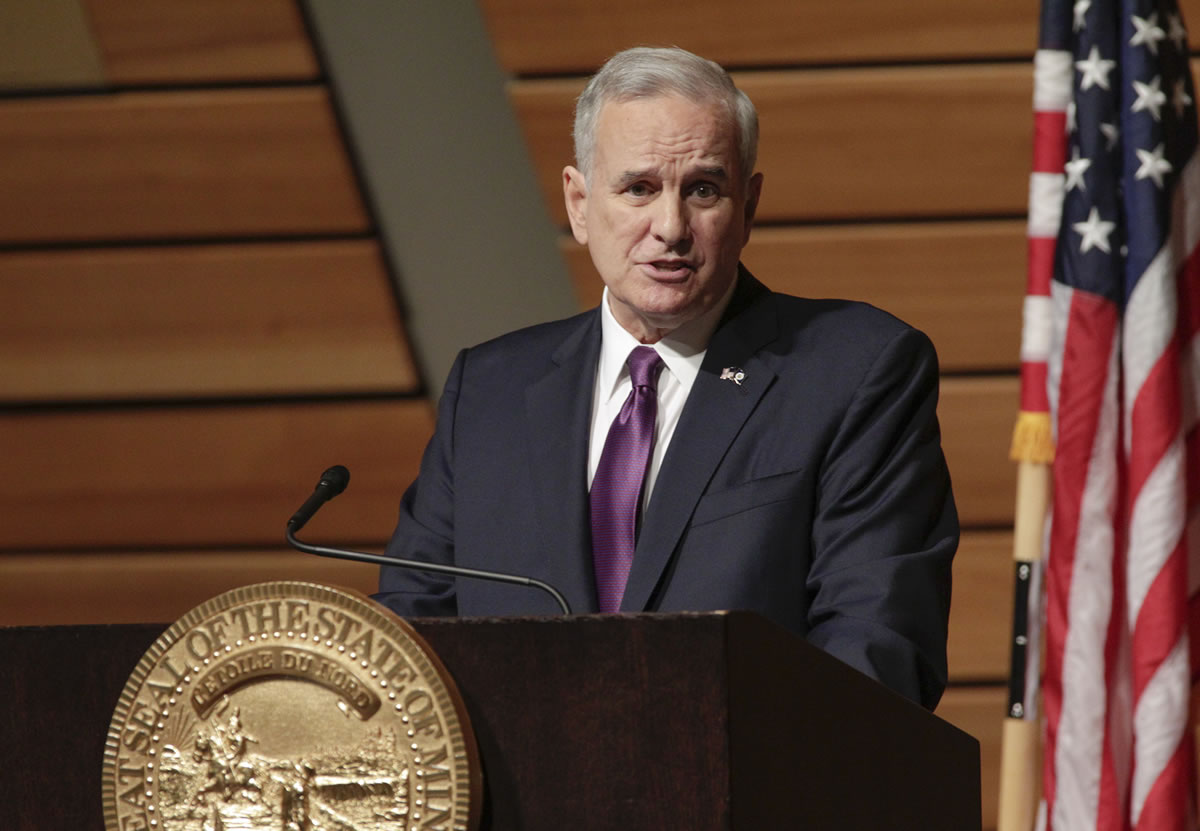

Share
In his State of the State Address Wednesday night, Minnesota Governor Mark Dayton called on legislators to join him in addressing the state’s racial and geographic disparities, and in making needed investments in public education, transportation and infrastructure.
Afterward, union leaders from across the state praised Dayton’s speech.
Education Minnesota President Denise Specht called Dayton the “Education Governor.” Minnesota AFL-CIO President Bill McCarthy said he “demonstrated his commitment to ensuring that Minnesota is a state that works for everyone, not just the wealthy few.”
“Hardworking Minnesotans have always formed the backbone of our economy,” AFSCME Council 5 Director Eliot Seide added. “We applaud Gov. Dayton’s focus on infrastructure, transportation, and expanding economic opportunity for all Minnesotans. Those smart investments will help build a better Minnesota that works for all of us.”
Supporting workers left behind
Early in the address, Dayton reiterated his support for extending aid to Iron Range workers suffering from a slowdown in the mining industry and to minority communities that have yet to reap the benefits of Minnesota’s economic recovery.
Illegally dumped foreign steel has flooded the U.S. market, leading Iron Range mining companies to lay off an estimated 2,000 workers in the last year. The slowdown has impacted an additional 4,700 workers in mining-related jobs.
A relief package would extend unemployment benefits for about 2,750 workers, but Republicans, who control the House of Representatives, insist on pairing the relief package with tax breaks for businesses.
“To hold $29 million of desperately needed unemployment benefits hostage to $272 million in fund cuts is unnecessary,” Dayton told Republicans. “And it’s cruel.”
Dayton also cited several sobering statistics regarding racial and ethnic disparities in the state. Compared with Minnesota’s white families, he said, U.S.-born African American families’ annual income is 55 percent less, and their poverty rate is more than 4 times greater. Mexican-American, Ojibwe and Somali families also have fallen behind.
“We cannot resolve these disparities in one legislative session, but we must begin now,” Dayton said, pledging a “significant initiative” to increase economic opportunities for Minnesotans of color.
He also called on the state’s businesses to increase its outreach into minority communities and set a goal of doubling the percentage of minorities working in state government by the time he leaves office.
Modest investments, targeted tax cuts
As for how to approach Minnesota’s $900 million budget surplus for the next two years, Dayton said he would support pairing “modest spending increases” with tax cuts targeted for middle-class families, like an increase in the child-care tax credit.
But the governor, who faced a $6 billion budget shortfall when he took office in 2011, emphasized the importance of keeping the state on firm financial footing.
“Some people are proposing permanent tax cuts, which would put our state’s budget, once again, on a fiscal precipice,” he said.
“What we have been doing is working,” Dayton added. “Minnesotans are working. Minnesota is working. How could we stop now, when there is more work left to do?”
Investments in statewide broadband access, clean energy, rural water-treatment facilities, infrastructure, roads and bridges would create jobs and expand economic opportunities statewide, Dayton said. And he renewed his call for greater investment in early education to “prevent achievement gaps before they appear.”
Specht, president of the statewide educators’ union, praised Dayton’s support for learners at all levels.
“Gov. Dayton understands the foundation of our state is a great system of public education that prepares all students for successful lives,” she said. “His commitment to expand access to high-quality preschool and to support public colleges and universities will reduce the opportunity gaps which hold back too many of our students.”

